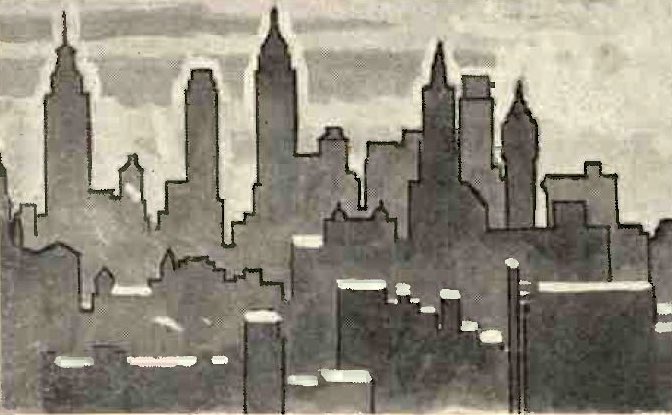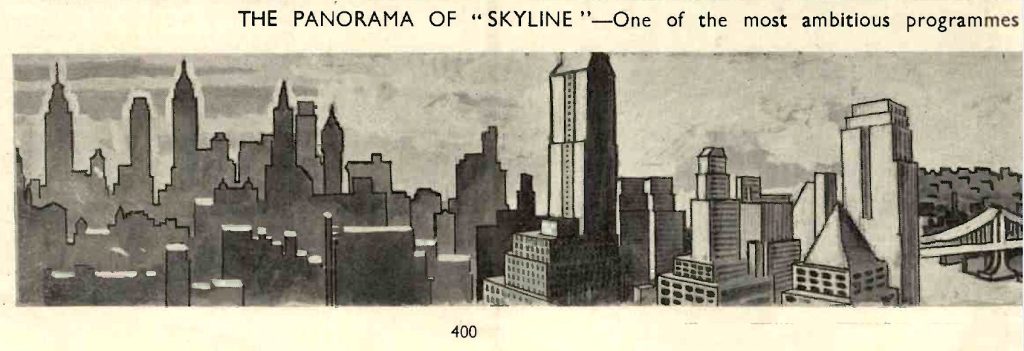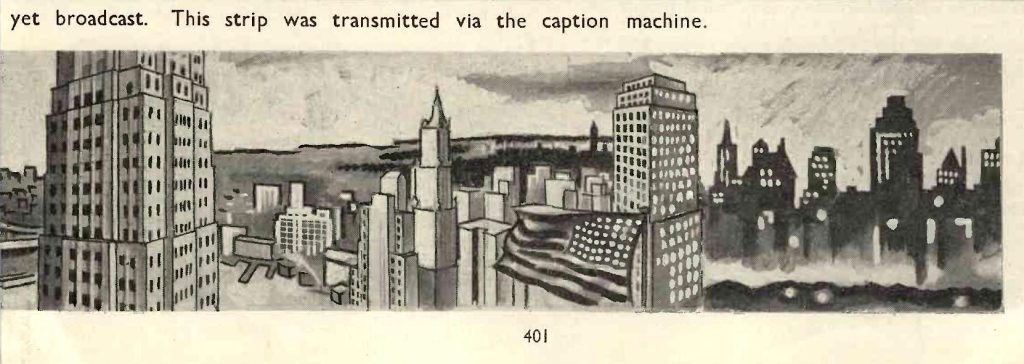OTD in early British television: 3 June 1935

John Wyver writes: By the early summer of 1935 the BBC’s 30-line transmissions were and confident and on oc casion truly ambitious. Overseen by producer Eustace Robb, these broadcasts marshalled an extensive range of talents and technical capabilities that, by comparison with later systems, were basic and yet still with the capacity for striking visual effects.
Perhaps the closest we can approach one of Robb’s ambitious broadcasts is through the camera script of the 45-minute broadcast Skyline, published by the monthly Television in July 1935. Transmitted at 11pm on Monday 3 June (and played again two evenings later), the programme was rehearsed for just two and a half hours that morning.
As every transmission did by this time, it opened with the signature tune ‘Things are looking up’, and with captions with the names of those taking part: six principals and ‘The Eight Good Lookers’ dance troupe.
After an announcement over a title card, as they listened for a minute or so to Sydney Jerome’s seven-piece orchestra playing ‘Stars and stripes’, lookers-in saw a developing pen-and-ink drawing by Eliot Hodgkin of a panorama of Manhattan. Hodgkin was an established painter of still lives and murals, and his skyline, transmitted via the subsidiary scanner known as the caption machine, was a carefully rendered image showing recognisable aspects of the city from dawn to dusk.


Fade to studio, the dancers entered, and then singers Reita Nugent and Billy Milton, who crooned ‘Zing went the strings of my heart’. After which there was the first of a series of carefully choreographed routines together with instructions for the scanner beam:
Girls come down the companion way with boxes – go to long-shot, place boxes on the floor and dance on top of the boxes – ??? beam [sic] starting from the right and travelling to the left up and down slowly – according to the sequence of the dance movements. Girls then go into circular movement, during which the beam should be kept steady.
After the first time round Billy Milton and Reita Nugent join and head the line, and after another circle lead the line forward to close-up. Billy MIlton exits stage left, Reita Nugent and all the girls – one after the other exit right.
Following which came dialogue scenes, and more songs and dances, with Sara Allgood, Georgie Harris and others, supposedly in iconic Manhattan locations, with a final sequence from ‘Harlem’ with Rose Walker.
With at least ten songs, as many instrumental sequences, and half a dozen dance numbers, including a rumba to ‘Lullaby of Broadway’, not to mention breaking-the-fourth-wall banter between cast members and announcer Geoffrey Wincott, Skyline was a hugely ambitious production, both for its studio staging and its televisual style.
‘Film technique is attempted, and very nearly achieved, in Skyline,’ enthused a correspondent for the Daily Telegraph. ‘Captions and fade-outs preserve a sense of artistic unity, and there are some realistic open-air touches with moving silhouette scenery.’
Television‘s ‘Studio & Screen’ column (which is an invaluable source for descriptions of so many of these lost 30-line transmissions) was similarly enthusiastic:
The Skyline programme would have made a good short film, and watching both performances I was impressed by the refinements of the second showing; it is extraordinary what a difference the addition of a few props like a table and a chair can make to a sketch…
From the entry of the Eight Good Lookers down the gang plank in the fade out after a Southern number there was no dull moment. It was a neat effect when the girls turned their black boxes to the scanner to reveal seven white initials which made SKYLINE.
The irish cook and the Yiddish page were well drawn characters. Real eggs and flour were used by Sara Allgood in the sketch; Broadway Lullaby was sung as only a coloured artist can; and when Billy Milton was seen at the piano I felt that I was one of his audience in ‘El Morocco’.
[OTD post no. 168; part of a long-running series leading up to the publication of my book Magic Rays of Light: The Early Years of Television in Britain in January 2026.]
Leave a Reply